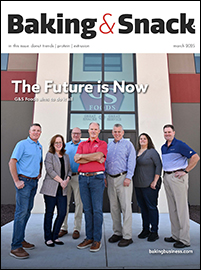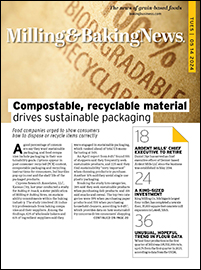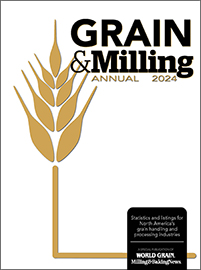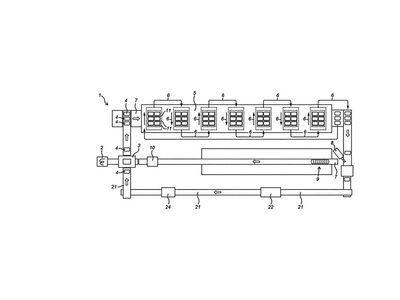
New baking industry patents from Frito-Lay, Barilla
From ingredient and equipment’s solutions to snacks, the patents cover a range of innovations.

Oven forming assembly
Used for proofing and cooking corrugated dough crusts, this system includes a forming assembly with at least one parallel cylinder opposing a base. Other inventions may incorporate a conveyor or multiple parallel cylinders and spaces in an alternating series.
US Patent No. 9,814,244 (Nov. 7, 2017), K. McFarland, Mesa, AZ.

Mixing apparatus
This device consists of an open mixing container sitting on a frame in the upper part of the apparatus. A single-shaft agitator is fastened to a tool configured as a rotor body in the lower part of the apparatus. The system’s agitator is adjustable to allow for large and small quantities of liquid or paste-like consistencies for making baked foods.
US Patent No. 9,814,245 (Nov. 7, 2017), J. Haas et al., assigned to Haas Food Equipment GmbH, Vienna.

Shortening particle compositions
The preparation of dough products such as biscuits, pizza crusts and cinnamon rolls can use shortening particle compositions that are low in trans and saturated fats. At room temperature, the majority of these individual particles do not adhere to one another so they can be handled, dispensed and applied to dough as separate particles rather than a single solid.
US Patent No. 9,814,250 (Nov. 14, 2017), B. Erickson et al., assigned to General Mills, Inc., Minneapolis.

Triangular prism snack
This patent illustrates the design of a snack food in a triangular prism shape.
US Patent No. D802,880 (Nov. 21, 2017), J. Mathew et al., assigned to Frito-Lay, Inc., Plano, Texas.

Dough packaging
This process is used to package and store unproofed, proofed and partially proofed dough products. It can also cook proofed dough products. The purpose of the packaging material is to hold muffin or roll batter — without creating a reaction — and shape it before it’s baked.
US Patent No. 9,820,492 (Nov. 21, 2017), N. Galluch et al., assigned to Rich Products Corp., Buffalo, NY.

Sponge products process
This method for the production of a shelf-stable sponge-type bakery product includes a casing of chemically leavened cake and a filling. To eliminate artificial preservatives, the formula uses two batters: The first dough is prepared, emulsified, steamed, filled with a semi-baked mixture and placed in a mould for an open and filled product; the second dough is prepared, emulsified, placed on the first dough to obtain a covered product, and steamed. The cake can then be cooled and packaged.
US Patent No. 9,801,393 (Oct. 31, 2017), R. Buttini et al., assigned to Barilla Group, Parma, Italy.

Bread bun
The design of a bread bun in the shape of a pig is portrayed in this patent.
US Patent No. D803,511 (Nov. 28, 2017), S. Lee, assigned to The Svl Companies, Inc., Las Vegas.

Snack bar shaping device
Snack and cereal bars can be created in various sizes, shapes and densities with this device, which includes a mixer, forming and shaping system, and a cutter. To minimize limitations such as insufficient product density and rollers that only clean and sanitize, the former uses two rollers and a piston to create the snack bar and one or more conveyor belts positioned below the rollers to transfer the product.
US Patent No. 9,826,775 (Nov. 28, 2017), B. Park, Los Angeles.

Rectangular lid
This patent shows the design of a rectangular food container lid.
US Patent No. D805,387 (Dec. 19, 2017), Y. Lin, Huizhou, China.

Flour composition
A cereal flour composition is created by subjecting a mixture with an emulsifier to a heating treatment for two to three minutes at 80˚ to 120˚C. The resulting texture of products such as deep-fried foods and pancakes is less prone to deteriorate over time and more capable of sustainment even after microwaved.
US Patent No. 9,833,004 (Dec. 5, 2017), R. Fujimura et al., assigned to Nisshin Foods, Inc., Tokyo.



